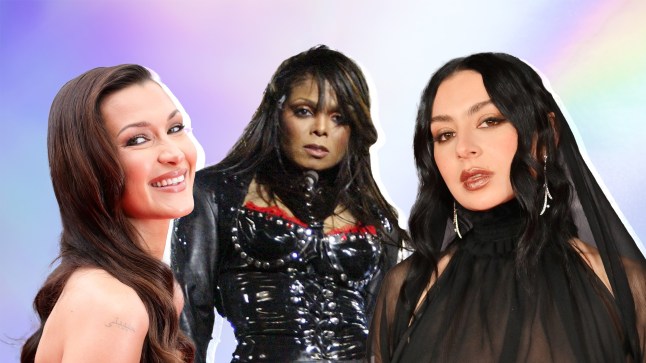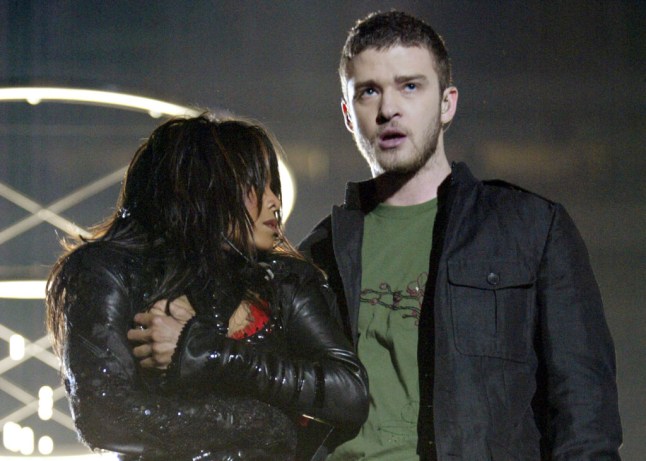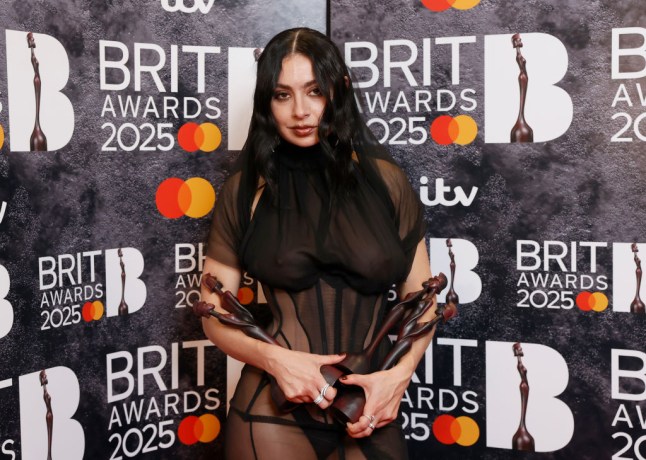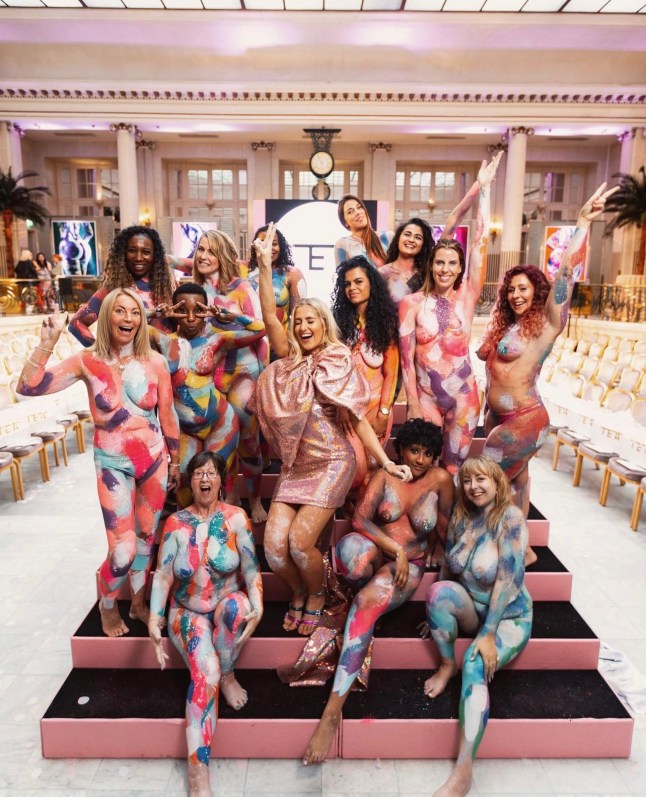
From the constant mocking of Aimee Lou Wood’s teeth to Sydney Sweeney’s stomach being branded ‘chunky’ by trolls, it seems there’s no part of women’s bodies that isn’t in the firing line.
And now, a new poll from YouGov shows that more than 60% of the British public believe it’s unacceptable for women to wear transparent or translucent clothing, as heaven forbid you might catch a glimpse of a nipple.
While the judgment is slightly less for celebrities (55% say it’s unacceptable for A-listers), female nipples continue to offend, despite repeated attempts to ‘free’ them from pasties, boob tape and bras (oh my).
So, how did we get here? The reality is complicated.
The history of the ‘nip slip’
Throughout the 1990s and 2000s, women were shamed for their ‘nip slips.’ In the early 90s, Kate Moss’ see through dress was so controversial, it’s still talked about today.
At the National Television Awards in 2000, TV presenter Judy Finnigan’s dress accidentally popped open, revealing her bra to the audience.
In an interview with Woman Magazine more than two decades later, she described it as ‘embarrassment on a global scale.’

Janet Jackson’s 2004 Super Bowl halftime show will go down in history not for her performance, but for ‘Nipplegate’, when her nipple was inadvertently exposed by Justin Timberlake.
The event undoubtedly had an impact on her career. Two months later, her album, Damita Jo, sold just 3m copies (compared to the 14m her 1993 offering, Janet, shifted). Her invitation to the Grammys was rescinded, and her singles and music videos were blacklisted by MTV.
A bid for nipple freedom
Throughout the 2010s though, the tide seemed to be turning when it came to nipple – and sexual – freedom.
The Free The Nipple movement officially began in 2012, when filmmaker Lina Esco released a documentary under the same name. Posting teaser clips of her appearing on the streets of New York City topless, she used the hashtag #FreeTheNipple online.
Her content was subsequently removed by Facebook – which prompted support from the likes of Miley Cyrus, Rihanna and Lena Dunham, who posted pictures on social media in solidarity with Lina’s cause.

The changing attitudes towards nipples were made particularly clear when Tumblr received backlash for their controversial nudity in December 2018, which prohibited pictures of ‘real-life human genitals’ and ‘female-presenting nipples.’
It led to a mass exodus of Tumblr users, with around a third leaving.
We also saw more nipple appreciation on catwalks, with Zendaya wearing a now iconic Tom Ford breastplate in 2020.
Recent style choices from the likes of Charli XCX, who wore a black sheer dress at the BRIT Awards in March, might suggest then that Free The Nipple is still well-supported in 2025 – but sadly these new statistics suggest we’re going backwards.
ITV allegedly raised its eyebrows at Charli’s outfit, to which the singer abruptly responded in one of her acceptance speeches. ‘I heard that ITV were complaining about my nipples.’
A further 825 complaints were made by members of the public to Ofcom about the event – the majority of which involved Charli’s outfit as well as Sabrina Carpenter’s raunchy performance.
The real-life impact of nipple shame
The taboo around female nipples can have a real-world impact on normal women, particularly when it comes to breastfeeding and access to crucial healthcare, like mammograms.
One 2018 study found that embarrassment remained a significant barrier to women breastfeeding in public, with 52% reporting feeling uncomfortable, 27% embarrassed, and 15% stigmatised.
And in 2025, statistics from the NHS show that more than 40% of women who are invited to a breast screening appointment don’t accept it. One of the leading reasons is embarrassment about showing their nipples.
It’s a sentiment shared by artist Sophie Tea, who has become famous for painting nude women. When she struggled to find reference images of realistic naked bodies, she asked her Instagram following to send her nudes. Overnight, thousands dropped into her inbox.

At its core, Sophie tells Metro that she feels nipple-shaming comes down to the fact that for generations, we’ve been taught to associate ‘certain parts of the body with modesty or shame,’ an ideology that’s been reinforced through ‘laws, media, and dress codes.’
And in her work surrounding painting the naked form, she’s spoken to women who have said that they’ve felt ‘uncomfortable’ breastfeeding in public, not ‘because they are, but they worry others could be.’

Why has the nipple still not been freed?
‘All women – regardless of their moral stance, how they feel about sexualisation, or the way young women might dress – should be really uncomfortable that this kind of question is still being asked in 2025’, Dr John Mercer, a professor of gender and sexuality at Birmingham City University, tells Metro.
‘It’s based on the assumption that parts of women’s anatomy are by definition obscene, that a woman’s nipples are actually so offensive to people, that they should be covered up at every moment.’
John adds that ‘everybody struggles a little bit’ with the fact that body parts which used to be private, are now shared in a way that they weren’t in the past, but he says that ‘regressive attitudes’ are contributing to the nipple remaining captive.
A 2022 UN study found that antiquated views of gender have worsened in recent years. Shocking figures in the 20-country study found that 19% of all respondents believe that there are acceptable circumstances for someone to hit their spouse or partner, and 54% of men aged 20-34 agreed that ‘women should work less and devote more time to caring for their family.’
John says we’re seeing a return to a more conservative sexual politics in which women are shamed for their clothing choices, and as a result, he suspects that many women are scared and feel the need to cover up for their own safety.
He added: ‘There’s real anxiety around sexualisation, and the fact that misogyny has come back with a bang.’
Looking to the future of nipple empowerment, Sophie believes that we must also question our ‘gut reactions’.
‘If you see someone wearing something sheer and your first response is discomfort, ask yourself where that comes from. Is it really about the clothing – or about what you’ve been taught to think?,’ she reflects.
Policy is important too, as Sophie cites the continued ‘censorship on social media’ as presenting significant challenges for her work.
‘I’ve had posts – even paintings just featuring nipples – either flagged or removed from platforms like Instagram, despite them being artistic or educational in nature,’ she says.
‘This kind of blanket censorship can silence important conversations around body image, health, and expression,’ she concludes.
‘There’s a real opportunity here to create safer online spaces without reinforcing shame or restricting expression – especially when the intent is education, not exploitation.’
Do you have a story to share?
Get in touch by emailing MetroLifestyleTeam@Metro.co.uk.
MORE: Woman who moved area and changed name to escape stalker father was found by him again
MORE: Green Day hits back at Charli XCX’s Coachella headliner dig










